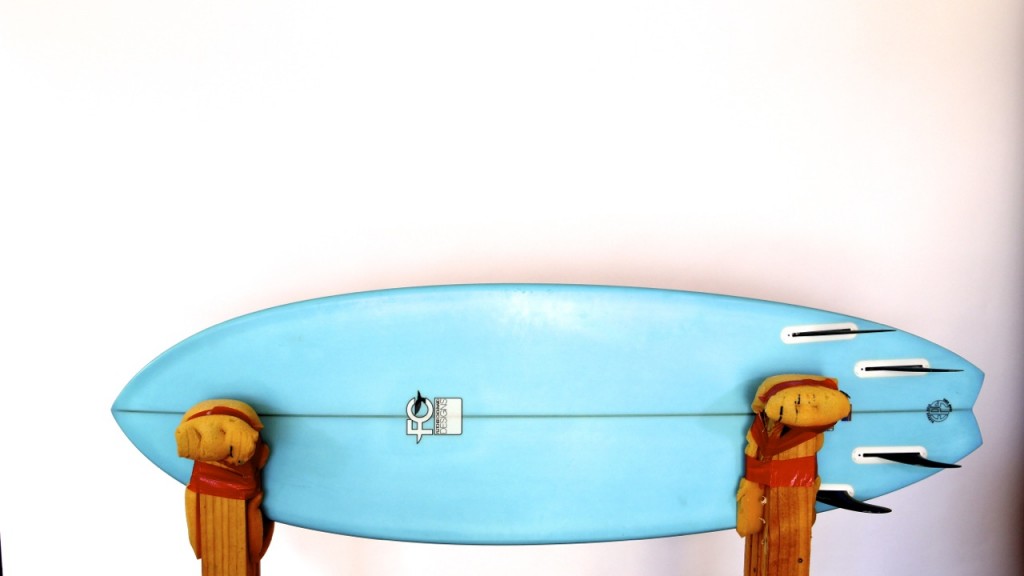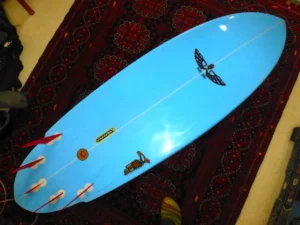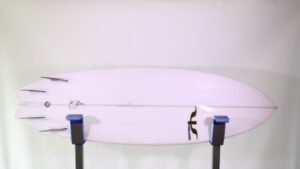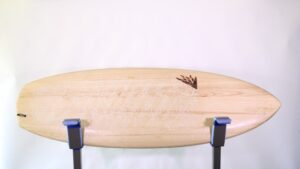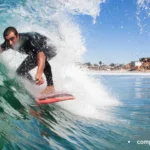Finding a board that matches both your style and the unpredictable waves is much like searching for the proverbial needle in a haystack.
Yet among all of the options available to surfers today is one board which promises to simplify this daunting task: the Fletcher Chouinard Designs (FCD) Fark.
The Fark isn’t simply another addition to an already oversaturated surfboard market; rather, Fletcher Chouinard’s ambitious attempt at creating the ultimate all-rounder, one that promises adaptability, performance and excitement across a broad range of wave conditions.
At first glance, the FCD Fark surfboard attracts attention with its eye-catching aesthetics and promise of versatility.
Featuring similar characteristics as celebrated models like the Channel Islands Pod and Haydenshapes Hypto Krypto, the Fark is designed to serve you in approximately 80% of surfing conditions.
This review dives deep into Fark’s performance, taking an in-depth look at its pros and cons to provide an in-depth analysis for those considering adding it to their arsenal.
Contents
- 1 Positives: Where the Fark Stands Out
- 2 Minuses: Areas Needing Improvement
- 3 My Personal Experience
- 4 Comparative Comparison between Other Boards
- 5 Conclusion:
- 6 FAQs
- 6.1 What makes the FCD Fark surfboard unique among other all-arounder boards?
- 6.2 Is the Fark surfboard suitable for powerful and hollow reef breaks?
- 6.3 Why does my Fark feel slow in the water?
- 6.4 What are the optimal wave conditions for using an FCD Fark?
- 6.5 How does the Fark compare with Channel Islands Pod and other comparable surfboards?
- 6.6 What material makes up the Fark surfboard and how does its construction impact performance?
Positives: Where the Fark Stands Out
The Fark is known for its versatility. Specifically designed to perform in conditions most surfers encounter regularly, its design ensures it can excel.
No matter if you are carving on clean waist-high waves or taking on more complex head-high sets, the Fark provides an exceptional blend of speed, flow, and precision that’s hard to find in just one board.
Its ability to perform well even on steeper wave faces adds another level of versatility, making this board an invaluable partner on any surf adventure.
Design and Construction:
A close examination of the Fark’s design reveals an ingenious combination of features intended to maximize its overall performance. Constructed using Expanded Polystyrene Foam (EPS), which reduces weight while improving buoyancy allowing surfers to choose smaller boards without losing paddle power.
The outline of this board is generous, accommodating a range of waves without hampering sharp turns and maneuvers by its surfer. Furthermore, its transition from single concave to double concave and then back out onto a V-back design enhances handling in all conditions for an enjoyable ride experience.

Minuses: Areas Needing Improvement
Although the Fark has many strengths, it does have its downsides. Most notably, it cannot handle powerful, hollow reef breaks–something specifically mentioned on FC Designs’ website as well as by surfers who’ve tested its limits.
Additionally, some surfers, including myself, have experienced times when the Fark suddenly seems slow, necessitating extra efforts in order to stay afloat.
Its low volume and paddle power may account for its seemingly slow-moving feel in certain conditions.
My Personal Experience
In this review, I decided to take the FCD Fark surfboard out for a spin at 6’2″ x 20 1/2″ x 2 11/16″, boasting 36.2 liters of volume and testing it across various waves from clean waist-high conditions all the way through overhead conditions.
My experience confirms the Fark’s versatility as an all-rounder surfboard, making it perfect for use on flatter-faced waves that often make up our surfing sessions.
Best Wave Type
The Fark excels in waist-to-head-high waves with flatter faces. Here, its design truly shines as its speed and agility allow riders to take full advantage of these conditions.
Though the board can handle waves of all sizes, its optimal performance corresponds to what many of us typically encounter on a daily basis – demonstrating its usefulness as a daily driver.
Comparative Comparison between Other Boards
Contrast other surfboards like the Channel Islands Pod, Haydenshapes Hypto Krypto, Bing Dharma and Simon Anderson Spudster; The Fark stands out for its combination of speed, maneuverability and versatility.
Each board in this collection brings something different to the table, yet Fark stands out as an appealing option for surfers looking for an all-arounder board. Its design philosophy prioritizes performance in various conditions.
Conclusion:
Overall, the Fletcher Chouinard Designs Fark surfboard stands as an icon for versatility and performance in surfing.
Although the Fark excels at fast, flowy and precise performance in most conditions most surfers encounter, its limitations in powerful reef breaks must be considered as well as its tendency to feel slower than anticipated. Even so, it remains an effective option for surfers searching for their next board.
The FCD Fark surfboard is an all-around performer, designed to meet all kinds of waves with grace and agility. No matter if it’s your local beach break or exploring unknown spots, this board promises to be your faithful partner throughout your surfing journey – embodying its user’s spirit of exploration on their quest for that ideal ride.
FAQs
What makes the FCD Fark surfboard unique among other all-arounder boards?
The FCD Fark stands out with its exceptional blend of speed, maneuverability and versatility across a broad spectrum of wave conditions. It is designed specifically to deliver a great ride in approximately 80% of waves most surfers encounter – making it a fantastic option for those searching for one board that can adapt to various surfing scenarios.
Is the Fark surfboard suitable for powerful and hollow reef breaks?
The Fark is not ideal for powerful, hollow reef breaks. As indicated on FC Designs’ website and confirmed through real-life testing, its design more accounts for average wave conditions rather than providing extreme power and precision needed for challenging reef breaks.
Why does my Fark feel slow in the water?
Some surfers have reported that the Fark can feel slow or sluggish at times, requiring additional effort to maintain speed. This may be caused by its lower volume and paddle power than expected from its outline, leading to increased efforts needed to accelerate. * Ideally add images with this product.
What are the optimal wave conditions for using an FCD Fark?
The Fark is designed to excel in clean, waist-to-head-high waves with flatter faces. Its design elements, such as its outline and bottom contours, have been tailored specifically for such conditions, providing a smooth ride experience.
How does the Fark compare with Channel Islands Pod and other comparable surfboards?
Though similar in concept to the Channel Islands Pod, the Fark is tailored specifically for slightly different wave conditions. Specifically designed to perform well across a wider variety of average wave sizes and perform in more environments than its competitor surfboards such as Haydenshapes Hypto Krypto and Bing Dharma; its distinct combination of speed and agility make it an exceptional all-round performer.
What material makes up the Fark surfboard and how does its construction impact performance?
The Fark is made from Expanded Polystyrene (EPS) foam, providing several advantages over standard wood boards: lighter weight and increased buoyancy, which allows surfers to choose smaller board sizes without compromising paddle power or wave-catching ability, thus improving its overall performance and responsiveness.

